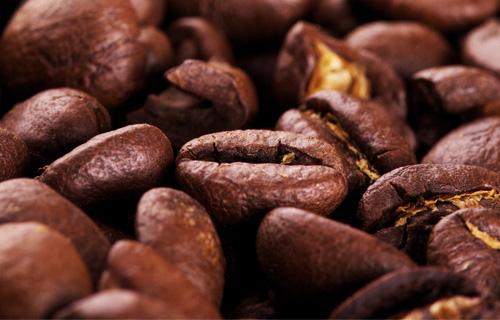Geographical planting area of Coffee in Ethiopia: an introduction to the Flavor characteristics of boutique Coffee in Dama, Ethiopia
Pay attention to coffee reviews (Weixin Official Accounts vdailycom ) and find a beautiful cafe to open your own shop
Geography of Ethiopia
Ethiopia is located at 15°-9° north latitude and is a landlocked country in northeast Africa. It borders Djibouti and Somalia in the east, Yemen across the Red Sea, Sudan in the west, Kenya in the south and Eritrea in the north. The whole country is dominated by plateau mountains, with central uplift and low surrounding areas. The plateau accounts for 2/3 of the country's area, with an average altitude of nearly 3000 meters. Most of the area belongs to the volcanic lava plateau with an altitude of 2,500 - 3000 meters, known as the "roof of Africa". The highest peak is 4,620 meters high. The lower Somali highlands are located in the southeast, and there are narrow plains along the northeast coast. East African rift belt runs obliquely through the middle, deep valleys, clusters of lakes, volcanoes and hot springs. The annual average temperature is 13 ° C. Tropical steppe and subtropical forest climate dominated, both mountainous and tropical desert climate. Annual precipitation decreases from 1,500 mm in the western plateau to 100 mm in the northeast and southeast.
Ethiopia is blessed with natural conditions for growing all conceivable varieties of coffee. Ethiopia's coffee beans are cultivated as a highland crop mainly in the area of 1100- 2300 meters above sea level, roughly distributed in the southern part of Ethiopia, about 6°-9° N. The soil here is deep, well drained, weakly acidic, soft and volcanic, rich in nutrients and abundant in humus, suitable for growing coffee beans. The rainy season lasts 7 months, from March to October, consistent with the coffee growth cycle, with annual precipitation of 1500-2700 mm and uniform distribution of precipitation. Temperatures fluctuate between 15 and 24 degrees Celsius throughout the coffee growing cycle.

Cultivation and processing of Ethiopian coffee
Coffee is harvested once a year. 3-4 Beautiful white coffee blossoms bloom during the month, and then the fruit begins to grow. 9-12 The moon-red coffee fruit ripens and waits to be picked. 11-12 A new season of coffee begins to be exported.
Most farmers use traditional farming methods. Artificial care of coffee trees, use organic fertilizer, do not use harmful pesticides and herbicides. Most of the coffee produced in Ethiopia is organic.
Coffee cultivation methods can be divided into forest or semi-forest coffee, garden coffee and plantation coffee.
60% of coffee is forest-semiforest coffee. In such wild coffee forests, pesticides are not used at all, but biological methods are used to control pests.
35% of coffee is courtyard coffee. In this coffee garden, the planting is three-dimensional distribution. Coffee sits in the lower layers, in the shade of other crops, to get the right environment to grow. Fertilizer is mainly deciduous, withered grass and animal manure.
5% of coffee is plantation coffee. This is a modern way of growing coffee. Coffee is grown as a forest, but new varieties are used and spaced apart from other shade trees.
Due to different processing methods, coffee can be divided into washed coffee and sun-dried coffee.
Washed coffee accounts for 35 per cent of exports. Good quality washed coffee is processed from freshly picked fully ripe fruit, carefully picked and closely monitored by professionals. After picking clean coffee beans on the day of picking to pulp, then fermentation, washing, drying, peeling. The humidity of the processed coffee beans is kept at about 12%.
Sun-cured coffee accounts for 65 per cent of exports. Picked primarily at home, red beans are dried on concrete floors or high tables to a humidity of about 11.5%, then peeled and washed.
Production and Export of Ethiopian Coffee
A significant amount of coffee production (95 per cent) is done by small shareholders, with an average yield of 561 kg/ha. For centuries, small shareholders of Ethiopian coffee farms have been producing a variety of high-quality coffee types.
Ethiopian coffee has unique characteristics in terms of "size of coffee beans","shape","acidity","quality","flavor" and "aroma", but high quality coffee cannot be separated from the production process of farmers. The secret to producing good coffee is that coffee farmers have learned the coffee growing process over generations, adapting it to local conditions: farming methods that use natural fertilizers, picking the reddest and most mature fruits, and processing them in clean environments. Ethiopian coffee always acts as a "coffee supermarket" for customers to choose the most preferred coffee varieties.
Ethiopia's total coffee production currently ranges from 200,000 to 250,000 tons per year. Ethiopia has become one of the largest coffee producers in the world, ranking 14th in the world; Africa ranks 4th. Coffee is also Ethiopia's most important export cash crop and the main source of Ethiopia's foreign exchange income, accounting for more than 35% of the total foreign exchange.
Important Notice :
前街咖啡 FrontStreet Coffee has moved to new addredd:
FrontStreet Coffee Address: 315,Donghua East Road,GuangZhou
Tel:020 38364473
- Prev

Introduction of Rosa Coffee, what is the price of Rosa Coffee?
Follow the caf é (Wechat official account vdailycom) and found that the beautiful cafe opened a small shop of its own. The rose variety originated from the inaccessible Mount Rosa in southern Ethiopia. The seeds of coffee were taken from Mount Rosa in 1931 and transplanted to Kenya in 1932. They were transferred to Tanzania in 1936 and Costa Rica in 1953. After that, Panama was transplanted around
- Next

The distribution of Ethiopian coffee, the story of Ethiopian coffee
Following caf é (Wechat official account vdailycom) found that the Cafe Beautiful Cafe opened a small shop of Ethiopian Coffee distributed in Ethiopia. Kaffa, Gima, Limu and Sidamo are the more famous producers of Ethiopian coffee. The world-famous Ethiopian coffee is mainly: 1. Limu coffee grows between 1400 and 2000 meters above sea level.
Related
- Detailed explanation of Jadeite planting Land in Panamanian Jadeite Manor introduction to the grading system of Jadeite competitive bidding, Red bid, Green bid and Rose Summer
- Story of Coffee planting in Brenka region of Costa Rica Stonehenge Manor anaerobic heavy honey treatment of flavor mouth
- What's on the barrel of Blue Mountain Coffee beans?
- Can American coffee also pull flowers? How to use hot American style to pull out a good-looking pattern?
- Can you make a cold extract with coffee beans? What is the right proportion for cold-extracted coffee formula?
- Indonesian PWN Gold Mandrine Coffee Origin Features Flavor How to Chong? Mandolin coffee is American.
- A brief introduction to the flavor characteristics of Brazilian yellow bourbon coffee beans
- What is the effect of different water quality on the flavor of cold-extracted coffee? What kind of water is best for brewing coffee?
- Why do you think of Rose Summer whenever you mention Panamanian coffee?
- Introduction to the characteristics of authentic blue mountain coffee bean producing areas? What is the CIB Coffee Authority in Jamaica?

